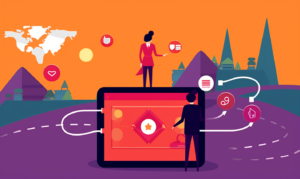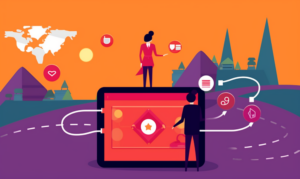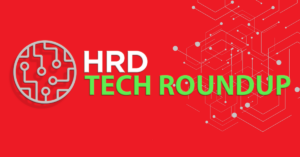Transforming HR technology: Interview with Humanyze
- 4 Min Read
A constantly changing tech landscape means companies must constantly transform to keep up, and to maximise the potential of their workforce. HRD Connect delves deeper into the ever-expanding world of HR Technology.
- Author: HRD Connect
- Date published: Aug 15, 2019
- Categories

Companies are always looking for new ways to improve the engagement, productivity, and happiness of their workforces. Implementing new HR technologies could be the answer to solving this endless puzzle. To delve deeper into how technology is changing the world of work, HRD Connect spoke to Ben Waber, co-founder and CEO, Humanyze.
Founded in 2011, Humanyze is a world leader in understanding team dynamics and work patterns. With over 10 years of research into organization network analysis and behavioural science, conducted by leaders in the world of social physics and graduates of the MIT Media Lab, they help companies understand how work gets done. In 2017 they invented biometric badges that tracked employees around the office. Since this invention, they’ve gone on to further expand the possibilities of the work landscape.
What is the concept behind Humanyze and what benefits can this new technology bring?
My co-founders and I started this company during our time at the MIT Media Lab. We now have over 10 years of understanding team dynamics and work patterns. At the core, we help companies understand how work gets done. We believe that companies can drive team productivity and engagement, all while enhancing the employee experience. In the new world of work, new technologies are the key to attracting the best talent. Adapting to these changes could increase the success of businesses.
How are innovations like Humanyze changing the way we work?
Our mission has been to change the future of work. We want to help companies to be intentional in the way they make decisions. Until now, companies typically followed trends or hunches. Now, companies have actual data that can drive and show the impact of those decisions. With the future of work being uncertain due to technological advances, and the job landscape constantly changing, using data can heavily benefit organisations. Global trends have shown us that work-life balance, mental health, and flexible working are all important for employees today. With analytics and data at the forefront of this, businesses can capitalize on all the needs and desires of their workforces, all at once.
What are the main challenges behind embedding new technologies into a company?
The main challenge in implementing any new technology is being able to accurately show that the value is worth the disruption to your employees’ habits or schedules. Any time there is going to be a change, people want to understand how it’s going to benefit them. Employers can overcome this obstacle by being transparent, and constantly communicating with their workforces, so that when these changes do come, their employees are ready for it. No matter how much technology advances, people will always remain at the centre of business. Therefore, companies need to ensure that their workforces are ready for these changes.
Can new technologies negatively impact face-to-face communication?
It’s important for us to always improve the way people communicate with each other. Research shows that by analysing work patterns, employees can find more organic ways to communicate with each other. These new tools can only encourage workforces to increase their communication and collaboration skills. Communication depends on the workforce – if they’re working in a positive and engaging place, their communication levels, regardless of how much technology they use, will be much higher.
What other technology trends are there to look out for in the next 5-10 years?
The increasing use of sensors is very interesting, not just because of their ability to help us understand the world, but also because they can be influenced. Today, all of this is intentional – you can change temperature and lighting based on personal preferences. However, it is more interesting to think of when it can become unintentional. For example, if I want to be healthier, can the environment change support that? Can the environment have the lights dimmed where your snacks are, so you are not so tempted? Or, if you need to focus at work, can lights adjust to support that? Technology that fits into how people live or what they are already working on, rather than technology focusing on radically shifting behaviour, is very interesting.








